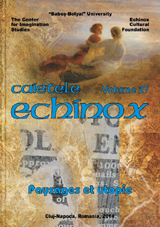Vide et mondes possibles au Moyen Âge et dans la pensée moderne
Void and Possible Worlds in the Middle Ages and Modern Times
Author(s): Frédéric Ferro, Nicolas Weill-ParotSubject(s): Cultural history
Published by: Universitatea Babeş-Bolyai
Keywords: Aristotle; Leibniz; William of Clifford; Vacuum; Cosmos; Dystopia; Utopia; Several Worlds.
Summary/Abstract: Medieval scholastic commentators of his Physics excluded the vacuum from the universe. They added the idea that “Nature abhors a vacuum”. But from the middle of the thirteenth century onwards, some of them methodologically set up hypotheses secundum imaginationem (“according to imagination”) built on the existence of a vacuum. Two examples are set forth taken from two commentaries on Physics: the first (ca. 1250-1260) by the English master William of Clifford, the second, anonymous, and probably written between 1277 and 1310. Such hypotheses could lead to several issues and hence several worlds. The vacuum state turned slowly from a mere possibility to a fact in modern science. In the following we examine how Gottfried Leibniz uses many arguments of the 17th century against the Newtonians to show its metaphysical impossibility. One of his arguments is of an almost psychological nature: a vacuum would be not only inexistent, it would also be too convenient, a figment of the imagination, a kind of “pleasant story”.
Journal: Caietele Echinox
- Issue Year: 2014
- Issue No: 27
- Page Range: 23-39
- Page Count: 17
- Language: French
- Content File-PDF

